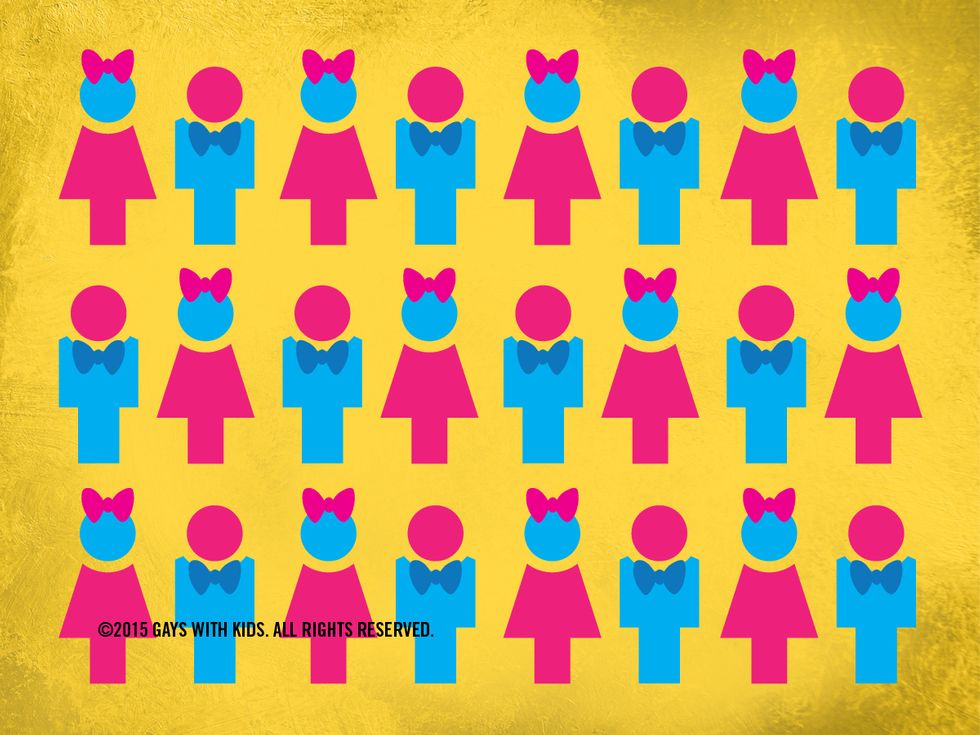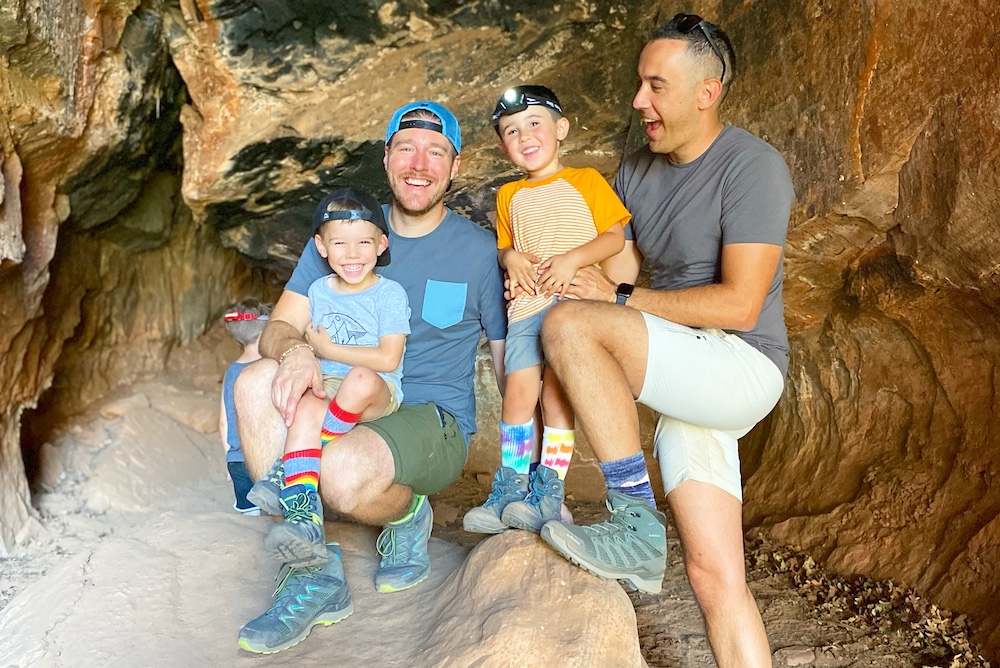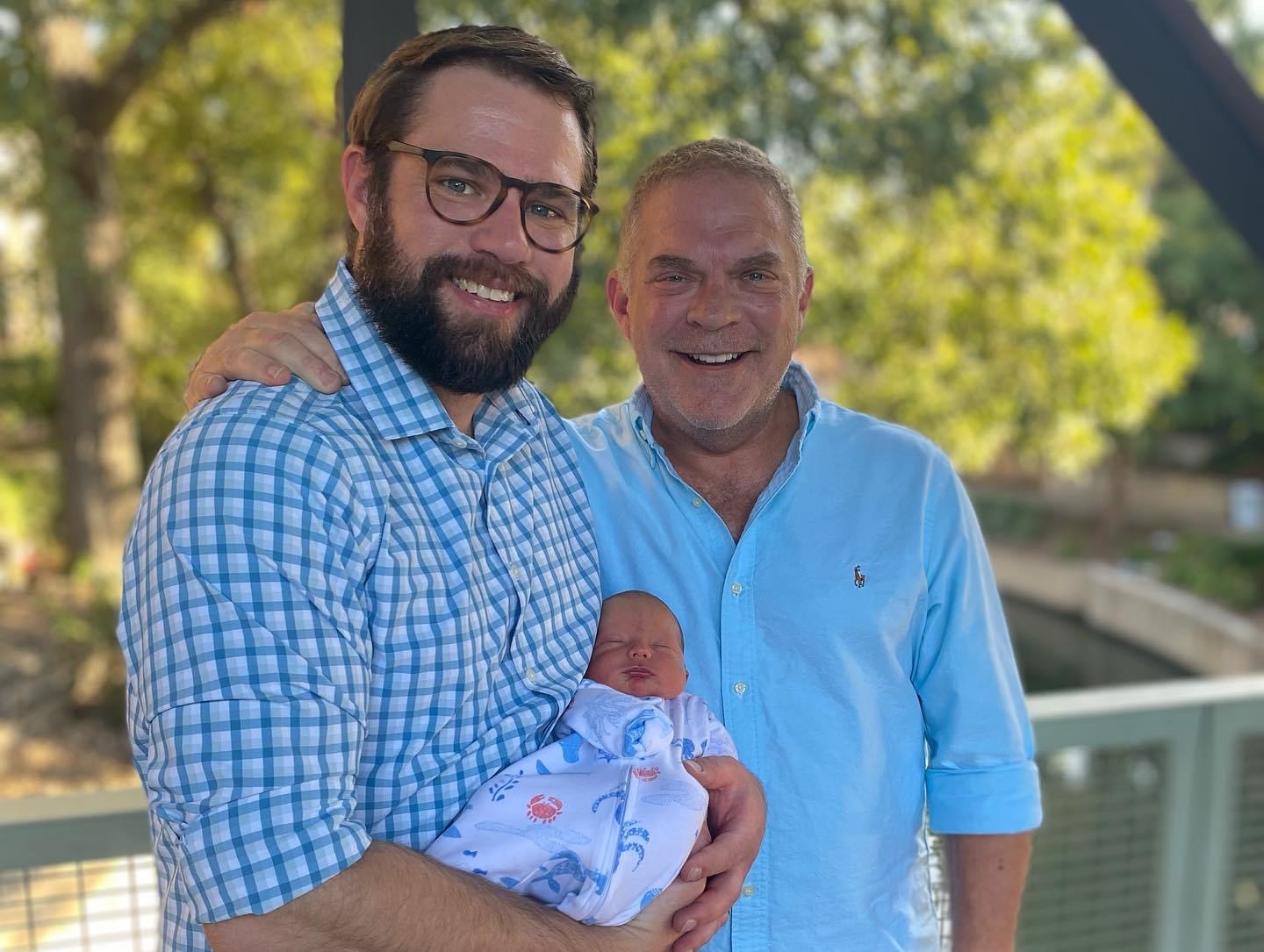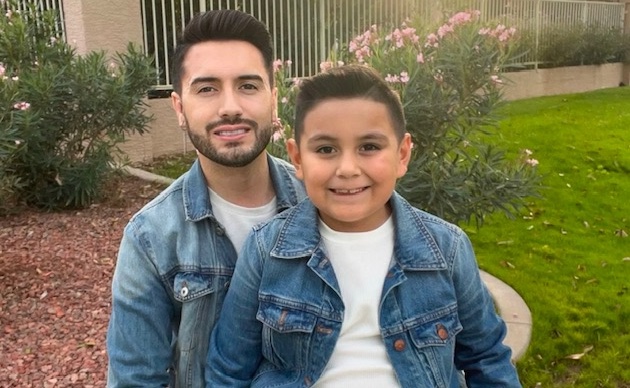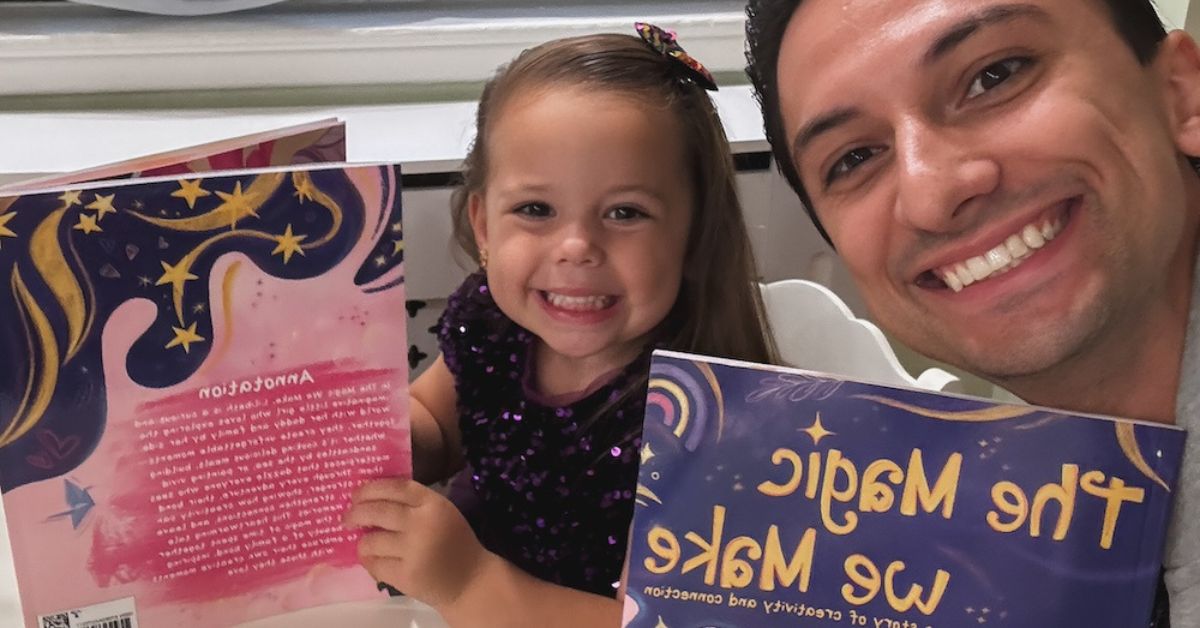The social worker had been waiting on the street for three hours and pounced as Adam Holland, his husband and their son pulled out of their West Hollywood, Calif., driveway. The mother of their child’s best friend at preschool, they learned, had called children’s protective services.
“The report said that we were forcing our child, our boy, to dress like a girl,” Holland said. It said that we were confusing him, and that he was suffering.”
For Holland (who asked that his real name not be used to protect his child’s identity), 44, it was a confirmation of the worries spinning in his head since his son began announcing that he was a she.
“At about 3 years old, we got that this kid wanted to wear princess outfits and cheerleader outfits that grandparents got and little Disney frocks from the play chest,” he said, “and we figured, ‘We’re liberated gay dads; our kids can role play however they want.’ So we had plenty of costumes of all different kinds.”
That led to pitched battles to remove the dresses before bed and school, as well as family counseling, which Adam wound up attending solo.
“She said, ‘Well Adam, why don’t you come back next time, just you.’ And I didn’t realize what was happening, but over the next couple of months I kept asking, ‘So when do we bring the child back?’ And she said, ‘Oh well, we find that the kids don’t really have much work to do. It’s mostly the parents.’ And I thought, ‘Ah, I get it now.’”
In fact, while an understanding of children who don’t conform to traditional standards of gender may come easier to gay fathers, they can face challenges that heterosexual parents may not.
“Gay and lesbian folks deal with all of this better,” said Dr. Johanna Olson, medical director of the Center for Transyouth Health and Development at Children’s Hospital Los Angeles. “But the challenge that gay men still face, particularly if they have a transgender daughter, is a fear that people are going to think that they’re doing that to their kid. There’s an overall pervasive idea that the parent is doing this to their kid, but that’s especially true for gay men.”
With the help of the therapist and others, Holland put together a so-called safe file, letters and other documents from their pastor, counselors, teachers and others explaining the gender identity situation of their child Claire. They showed it to the CPS investigator, who left their home considerably more educated. Still, the incident was terrifying for Holland and his husband. “We had finalized an adoption with this child and it felt like they were going to take her, in the guise of a well-intentioned but uninformed social worker.”
While Holland was learning to confront his own feelings about the gender identity of the child he increasingly accepted as his daughter, she sent him a message that she needed the process to move more quickly.
“Claire at one point tried to cut off her own penis. She wasn’t using a very sharp knife, it was like a butter knife, and I sort of happened upon it and said, ‘Whoa, what’s going on?’ And she said, ‘I want to get rid of this.’ So at that point, we had to do something really tangible for her.”
That was how Claire came to Dr. Olson, who explained to her in terms understandable to a 4-year-old that doctors could eventually help her be externally who she was inside.
“I am touched and moved as a pediatrician that I can play a tremendous role in what I see as a human rights movement,” Olson said.
* * *
Thinking back, Steve Magazine, of Newport Beach, Calif., remembers his son, Troy, at 5 or 6, wishing that he was a girl as he blew out the candles on his birthday cake. And that was the only hint of him being unhappy with his assigned gender, until one day in October of his junior year in high school. “We got a call from the school counselor telling us that Troy was in her office and had thoughts of suicide and had been trying to plan it,” said Magazine. He explained that if he could have thought of a way that wasn’t painful, he would have.”
Magazine, 53, and his husband, Harold, 52, who adopted Troy at 5 days old, were shocked. While he had come out to them as gay not long before, they were unable to understand why he never spoke to them of his depression himself. “I felt like I would never sleep or be happy again,” said Magazine. “I was so scared of finding my child dead. After about three months Troy came to the realization that it was the male person he wanted to get rid of; he didn’t really want to die.”
Shortly thereafter, Troy, who eventually chose the name Luna, began presenting as female full-time. Luna, now 17, began hormone therapy last summer and is initiating a career in modeling and acting. Like Holland, Magazine said that coming to understand his daughter’s gender identity has not been without its challenges. But seeing her happy and thriving dispels many of his worries.
“She is now talking about surgery,” said Magazine. “We will be able to go in for a conference after she has been on the medicine for a year. We’re scared for her but she explains to us that she’s more than 100 percent sure she wants the surgery.”
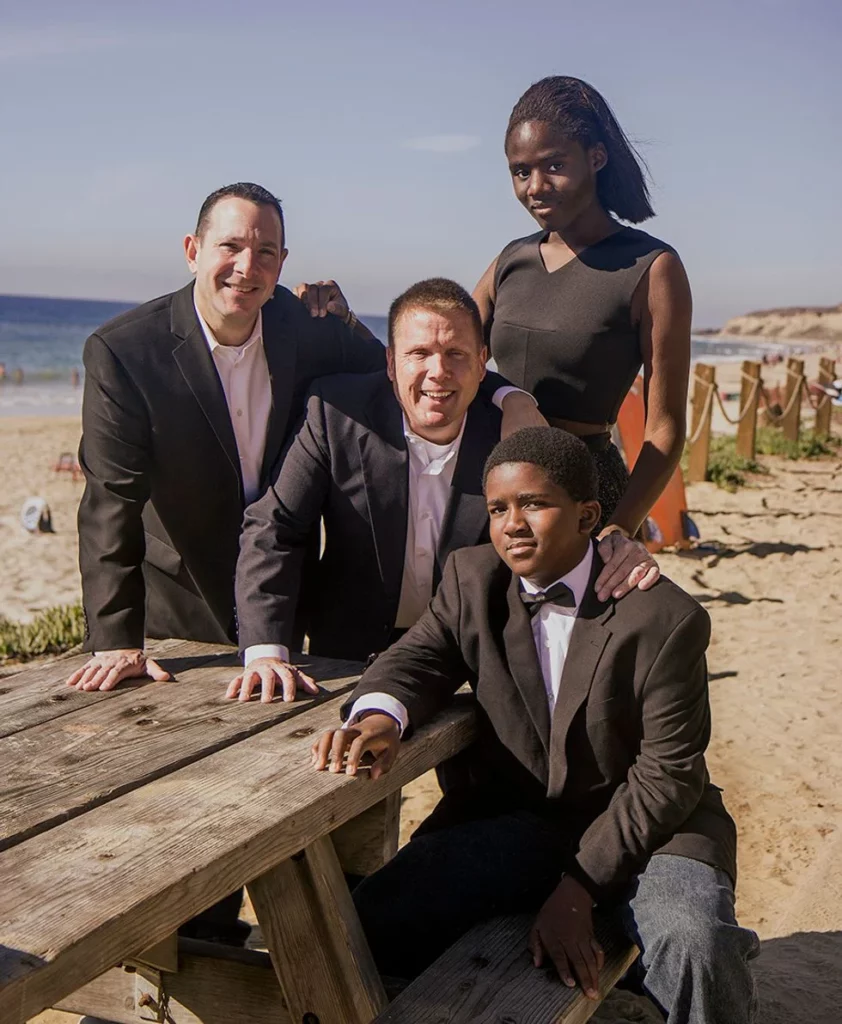
* * *
Olson says that while she has more than 100 patients under the age of 13, most are far older.
“If you don’t have supportive parents,” she said, “you don’t claw your way here until you’re 18.”
While cross-gender role play is extremely common in children as young as 2, Olson says that various studies have shown that transgender children share several factors that set them apart from a 3-year-old boy who occasionally dons his sister’s tutu.
“The more dysphoric or unhappy a kid is about their assigned gender, the more likely they are to have a trans-identity in adolescence,” she said. ”They also found that kids who were stating that they were a different gender from their assigned gender were more likely to persist; kids who were asserting, ‘I am this gender.’”
Surveys of her own patients have found that while the average age a transgender child realizes his or her gender identity is around the age of 7, most don’t disclose it until age 16, a gap of nine years. That has serious implications, for emotional and psychological development during a crucial period of childhood, and especially for physical development, if the child hopes to avoid an incorrect puberty and develop in accordance with his or her gender identity. Since 2006, hormonal therapy has been available to block changes that produce secondary sex characteristics, such as breasts in anatomical females or facial hair and bone changes in anatomical males, but Olson recommends that it begin by 9 in those born as girls and 11 for those born as boys. Hormone therapy to induce puberty that corresponds to their gender identity can follow later.
“That affords transfolks the ability to decide whether they want to disclose or not,” said Olson. “And that’s a real gift because we still live in a world where if you are identifiably trans, particularly a transwoman of color, you’re at very high risk for a lot of bad things.”
Olson says that much of that begins in childhood, and that it falls to parents to shield their children. While Holland and Magazine both say they faced a learning curve, no one had to tell them how to protect their kids.
“I would be walking behind with her little brother and I would see people looking at her and trying to figure her out,” said Magazine. “I saw people laughing, pointing, and commenting. I went up to people many times and said something like, “That is my child you are talking about!”
Claire, now 9 and “stealth” (passing as cisgender), is well aware of the changes approaching. “Claire is assessing her body,” said her father. “We don’t know when she’ll hit puberty but it could be soon. When she feels her body’s changing, we’ll go into Dr. Jo [Olson’s office] and start with blockers, because it’s very clear she doesn’t want to go through a male puberty.”
Olson’s program increasingly sees young people who never feel a particular need to identify either as transgender or cisgender, as traditionally male or female.
“The experience of gender is broadening so much as time goes on,” she said. “If you look at youth culture around gender, it’s really youth who are driving this movement to have a more expansive lexicon. It’s not about transpeople necessarily, it’s about people having more ways to describe gender roles.”
In the end, both fathers say it’s not clear who grew more, their kids or themselves. “We have all transformed because of her,” said Magazine. “I thought I knew it all, yet she has taught me so much.”

